Extracts of two brown algae, Padina tetrastromatica and Sargassum ilicifolium, had maximal antibacterial activity against Vibrio parahaemolyticus
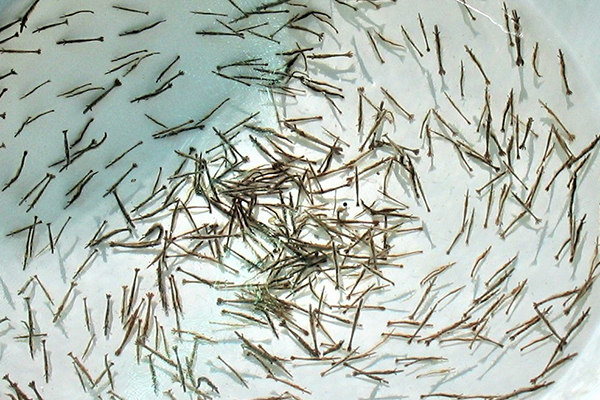
Various diseases cause significant impact globally to the farmed shrimp industry. Cumulative economic losses by 2019 had been estimated at (U.S.) $23.6 billion from outbreaks of Acute Hepatopancreatic Necrosis Disease (AHPND) and other shrimp diseases worldwide, and these outbreaks have resulted in a loss of $7 billion in feed sales.
The bacterium Vibrio parahaemolyticus is one of the most virulent and prevalent pathogens in farmed shrimp. It is the leading causative agent of AHPND, and mortality occurs within 20 to 30 days after stocking in culture ponds with mortality rates of 40 to 100 percent. Improved pathogen control is essential to prevent vibriosis and other bacterial outbreaks in shrimp culture.
The concept of pathogen control in aquaculture, especially disease prevention using herbal and phytochemicals, has received much attention. Shrimp have innate immunity to combat pathogenic infections, which is a first-line defense mechanism. This system eliminates invading microorganisms by humoral and cellular immune responses. The innate defense system of shrimp is closely related to its blood (haemolymph), as it contains haemocytes that are involved in various cellular defense mechanisms
Various substances such as B-glucan, chitin, algal derivatives, bacterial and fungal polysaccharides, and synthetic materials such as levamisole have been used to improve immunity and resistance to diseases in fish and shrimp. Recently, various novel extraction techniques have been applied to collect active ingredients from different seaweeds; these include microwave or ultrasound extraction, subcritical water extraction, supercritical or pressure-assisted fluid extraction, and rapid solvent extraction.
This article – adapted and summarized from the original publication (Sheikh AftabUddin, S. et al. 2021. Effects of seaweeds extract on growth, survival, antibacterial activities, and immune responses of Penaeus monodon against Vibrio parahaemolyticus. Italian Journal of Animal Science, 20:1, 243-255) – presents the results of a study to investigate the effects of different solvent extracts of two brown seaweeds, Padina tetrastromatica and Sargassum ilicifolium, on the growth promotion, survival and immune protection in black tiger shrimp (Penaeus monodon) juveniles against the bacterium Vibrio parahaemolyticus.
Study setup
This study was conducted at the Institute of Marine Science, University of Chittagong, Bangladesh. Healthy, disease-free postlarvae (PL) of P. monodon (2.03 ± 0.27 grams) were procured and collected from a local shrimp trader. The shrimp were acclimated for three days, and uniform-size shrimps were selected from the stock and transferred to individual 500-liter tanks. Twelve experimental groups and a control group (C) were stocked in triplicate at a stocking density of 100 individuals per tank. Water parameters were recorded during the 45-day experimental period; these included temperature (27 ± 2 degrees-C), salinity (16 ± 2 ppt) and pH (7.6 ± 0.3). The shrimps were fed at 5 to 8 percent of their body weight three times daily. About 20 percent of the water was exchanged daily, and unconsumed feed, feces and molted shells were removed daily before water.
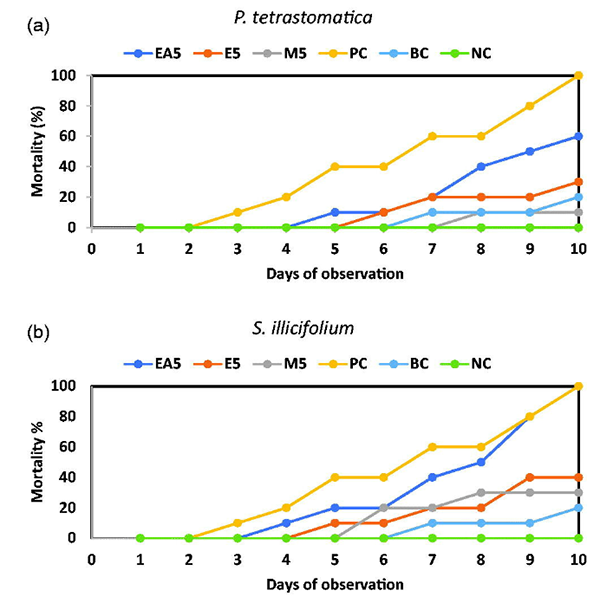
Samples of the seaweeds P. tetrastromatica and S. ilicifolium were collected from the shallow intertidal zone of St. Martin’s Island, Bangladesh. Twelve test diets (6 × 2 seaweed species) were prepared with ethyl acetate (EA2.5, EA5), ethanol (E2.5, E5) and methanol (M2.5, M5) extracts by mixing the extracts of the two brown seaweeds with feed ingredients at a concentration of 2.5 and 5 g/kg. A control diet (C) was prepared without seaweed. These experimental diets were investigated as growth promoters and to provide immune protection against V. parahaemolyticus. The diets were fed for 45 days to the P. monodon juveniles.
For detailed information on the experimental design, diet preparation and animal husbandry; challenge test with V. parahaemolyticus and determination of antimicrobial activities; collection and analyses of samples; and statistical analyses, refer to the original publication.
Dietary passionfruit peel powder boosts Nile tilapia immunity
Results and discussion
After 45 days of the experimental trial, juvenile tiger shrimp treated with P. tetrastromatica and S. ilicifolium extracts showed significant differences in mean weight gain, SGR and survival rates. In our study, isoenergetic diets were not used; therefore, higher growth performance can also be a consequence of using non-isoenergetic diets for the juveniles. Other authors have reported improved growth and survival of penaeid shrimp fed macroalgae extracts and challenged with V. parahaemolyticus. It is not clear how the active compounds of different seaweeds enhance the growth of shrimp and survival; growth could be attributed to the vitamin and mineral contents, lipid mobilization and improved absorption and assimilation efficiency ratios of the seaweeds.
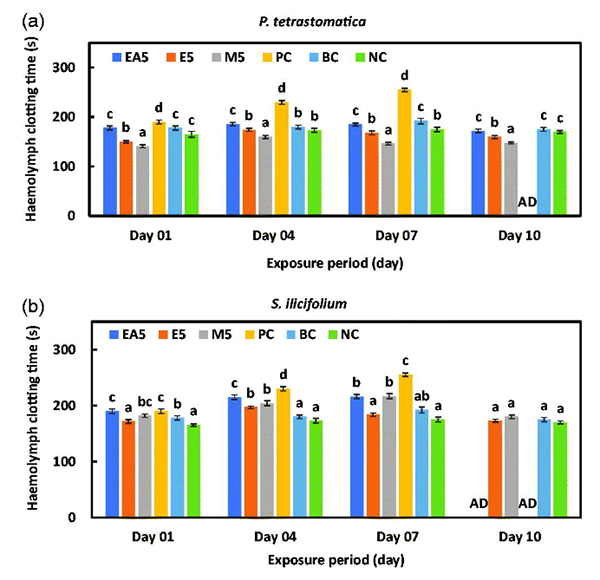
Seaweeds contain many antimicrobial compounds that have the potential for providing new drugs against microbial infections, cancer and inflammation. Our challenge test data against V. parahaemolyticus showed that the methanolic extracts of P. tetrastromatica and S. ilicifolium administered at 5 g/kg significantly inhibited the growth of this bacterium compared to ethanol and ethyl-acetate extracts and protected our experimental P. monodon against V. parahaemolyticus.
Other researchers have discussed the antimicrobial properties of various extracts of various seaweeds – including the green algae Caulerpa sertularioides, Ulva lattuca and others – that significantly inhibited the growth of V. parahaemolyticus. Our findings suggest that methanolic extracts of P. tetrastromatica and S. ilicifolium can control the growth of V. parahaemolyticus bacteria in farmed shrimp and might have potential as an antibacterial agent.
Crustaceans have no adaptive defense system, and they rely solely on their innate immunity against pathogenic infection. An innate defense system or in-born immunity system is an evolutionarily older defense strategy, and the shrimp defense system eliminates invading microorganisms through humoral [through antibodies] and cellular responses. The humoral response index includes clotting, antimicrobial peptides and other stress-responsive proteins and molecules. The first baseline defense mechanism of the shrimp humoral immune response is the clotting system, which is vital for the prevention of hemolymph [blood] damage during injury and wound healing and prevents the entry of opportunistic pathogens.
Our results showed that the methanolic-extract of P. tetrastromatica incorporated into diets and fed to shrimp lowered their hemolymph clotting time after 10 days of exposure to V. parahaemolyticus, demonstrating an adequate immune effect in the treated group. However, the hemolymph clotting time increased in the positive control (injected with V. parahaemolyticus) shrimp increased with increasing exposure period, and eventually all died. The increase of hemolymph clotting time for the positive control group was due to the substantial bacterial load in the hemolymph by infection, which had prolonged the clotting time.
In decapods, there are three major types of blood cells (haemocytes), and each has distinctive morphological characteristics and physiological functions. Haemocytes – one of the three major types of blood cells in crustaceans – are responsible for clotting, hardening of shells and removal of foreign particles (antigens). Our data showed that, after challenging with V. parahaemolyticus, the total haemocyte count (THC) levels of all groups of shrimp were sharply decreased on day four of the trial, and then gradually increased.
We also observed that shrimp fed the methanolic extract of P. tetrastromatica showed significantly higher concentrations of the enzyme phenol oxidase, PO [involved in a major defense system of invertebrates against pathogens] compared to the other groups. The immunological parameters revealed a gradual increase of PO activity with the methanolic extract of both seaweed groups, indicating that the defense systems of the juveniles were enhanced. An increase in PO activity after administration of extracts of various seaweeds has been reported for P. monodon challenged with Whitespot Syndrome Virus (WSSV).
Perspectives
Results of our study documented that the administration of methanolic extract of P. tetrastromatica through enrichment technique increased the defense capacity of P. monodon by increasing THC, phenoloxidase activity (PO), superoxide anion and resistance against V. parahaemolyticus. It also improved shrimp survival rate and production. However, more research is required to determine which compounds are present in the methanolic extracts, and which one(s) specifically stimulated this response.
Now that you've reached the end of the article ...
… please consider supporting GSA’s mission to advance responsible seafood practices through education, advocacy and third-party assurances. The Advocate aims to document the evolution of responsible seafood practices and share the expansive knowledge of our vast network of contributors.
By becoming a Global Seafood Alliance member, you’re ensuring that all of the pre-competitive work we do through member benefits, resources and events can continue. Individual membership costs just $50 a year.
Not a GSA member? Join us.
Author
-
Dr. Mohammad Abdul Momin Siddique
Corresponding author
Department of Oceanography, Noakhali Science and Technology University, Noakhali, Bangladesh; and Research Institute of Fish Culture and Hydrobiology, South Bohemian Research Center of Aquaculture and Biodiversity of Hydrocenoses, Faculty of Fisheries and Protection of Waters, University of South Bohemia, Czech Republic[100,98,46,117,100,101,46,117,116,115,110,64,110,99,111,46,101,117,113,105,100,100,105,115]
Tagged With
Related Posts
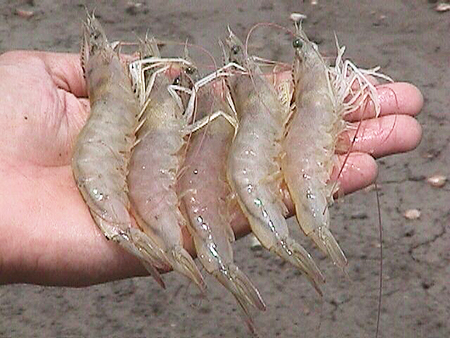
Health & Welfare
Botanical extracts improve productivity of shrimp, pangasius
In a study with pangasius, dietary administration of a blend of botanical extracts improved performance, reducing intensity of gill parasite infestation.
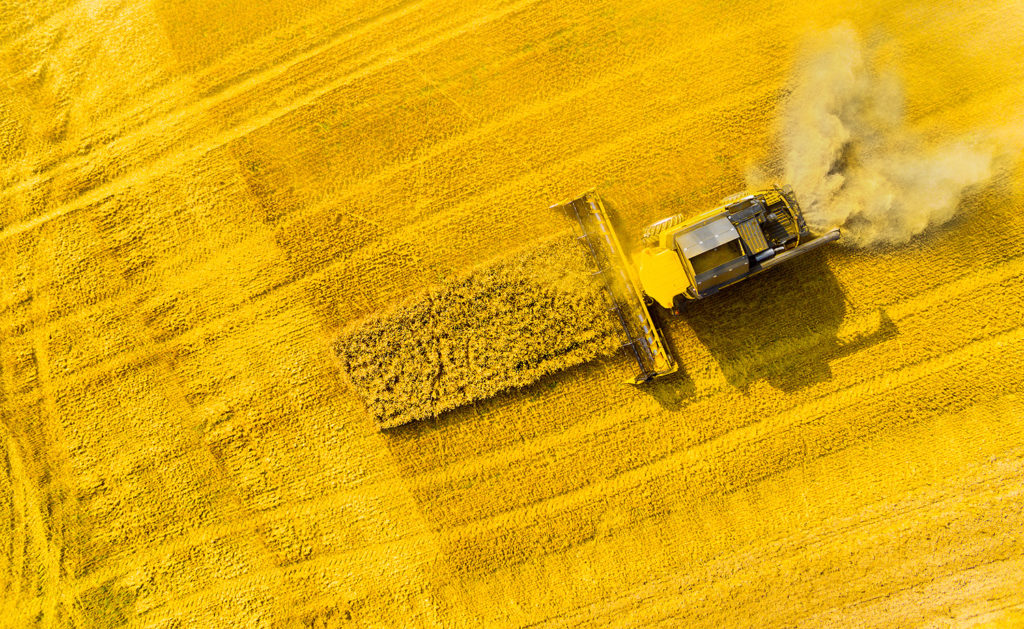
Aquafeeds
A push for rapeseed as a viable aquafeed ingredient
One Germany-based company says rapeseed protein concentrate, or RPC, can help aquafeed manufacturers meet growing demand.
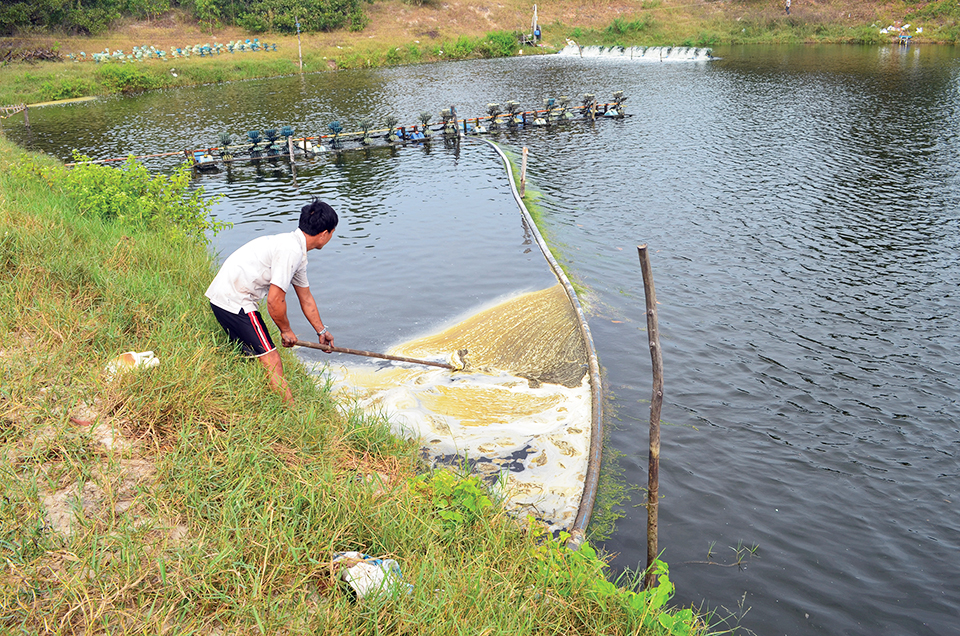
Health & Welfare
Caveat emptor when seeking for EMS solutions
The development of polymerase chain reaction testing to detect the bacteria that cause EMS is important, but confirmation by bioassay of presumptive positives to ensure pathogenicity is a prudent intermediate step.
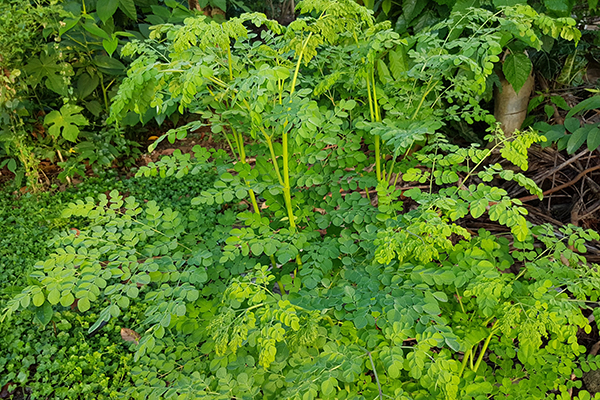
Health & Welfare
Moringa leaf extract can boost Pacific white shrimp immune responses
Including moringa leaf extract at a certain level enhanced immune response, growth and resistance of L. vannamei against V. alginolyticus infection.



